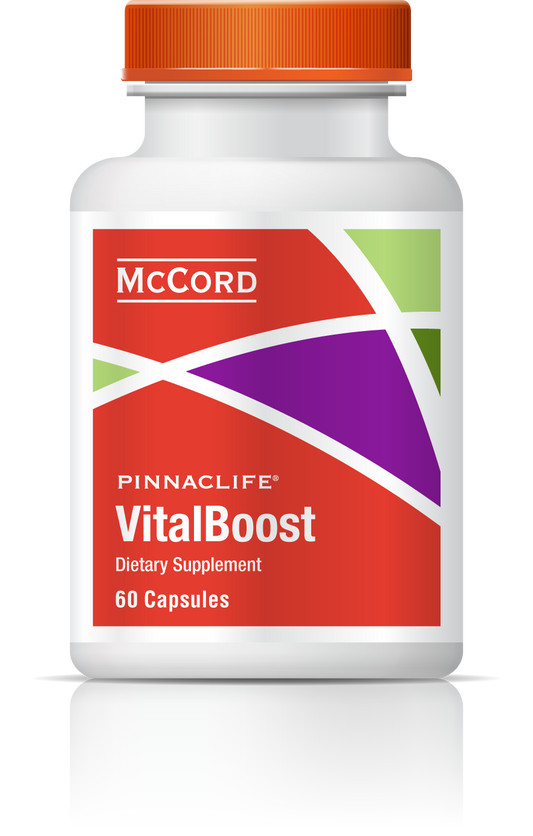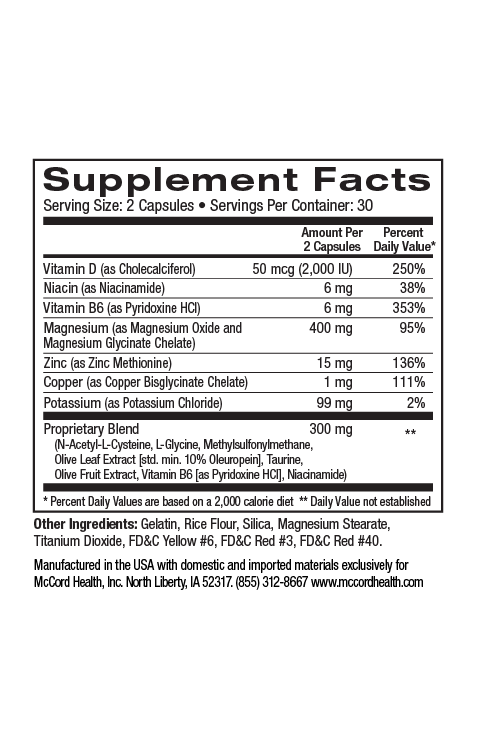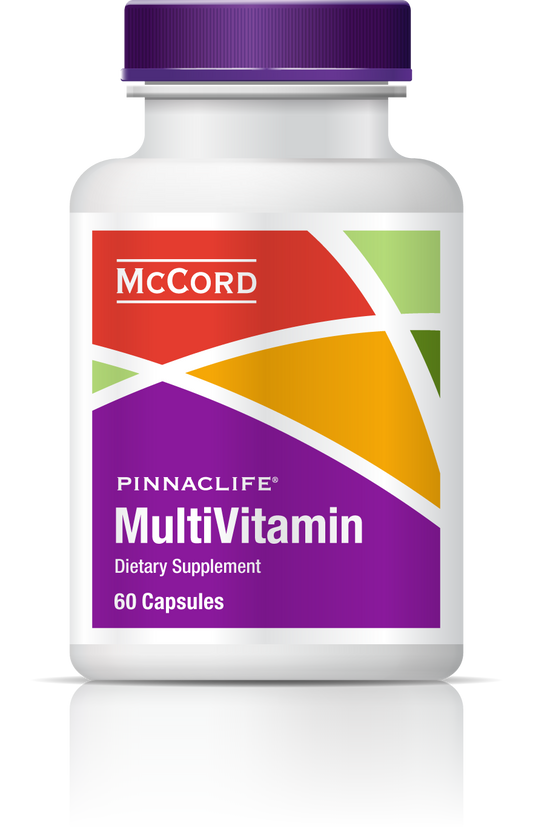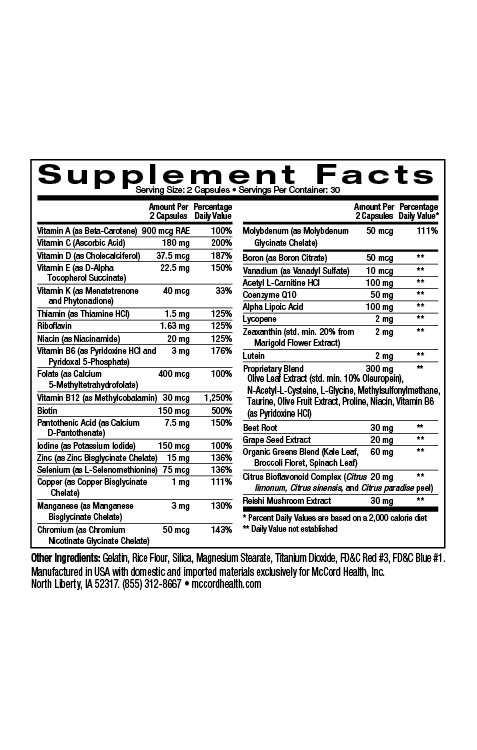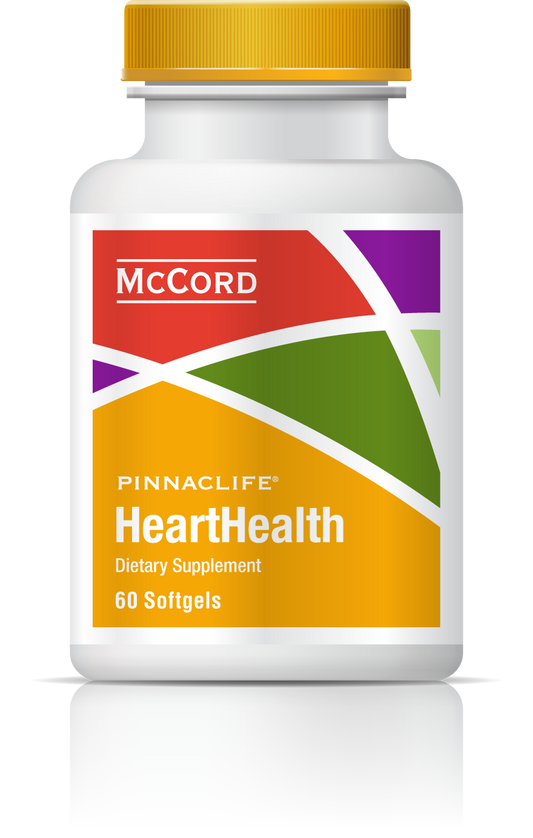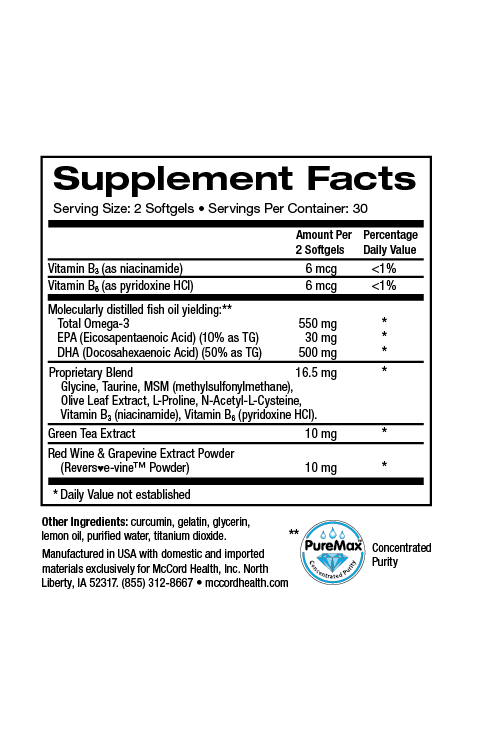Short Read
Nutritional labels for vitamins list 100% daily value (recommended daily intake), but do you know how the recommended daily value was calculated? Do you need more or less than 100% daily value to prevent vitamin and mineral deficiencies or to promote optimum health?
- 100% Daily Value (DV) is based on outdated numbers for many vitamins and minerals
- Updates to 100% DV of vitamins and minerals are infrequent and often inadequate
- 100% DV is based on the amount required to prevent clinical vitamin and mineral deficiencies in 97% of healthy 25-year-old men that are 5'9" and 145 lbs
- 100% DV does not represent the number of vitamins and minerals required for optimal health
- People that are overweight, on special diets, using medications, sick, exercising frequently, pregnant, or have certain medical conditions will likely require more than 100% for some vitamins and minerals
- There are often benefits seen when exceeding 100% DV of some vitamins and minerals in the proper balance
Tell me More!
You are probably familiar with the nutritional labels found on the packages of foods and nutritional supplements. You may even spend a significant amount of time evaluating these labels to compare products and select the healthiest option by comparing calorie, sugar, protein, and fat content – but what about the vitamins and minerals? Do you ever consider how much, or how little a product contains – or what it means if it is below or above 100% daily value?
You may notice that many supplements contain more than 100% daily value of some nutrients. It's natural for people to assume that the goal should be to get 100% of the recommended daily value of each nutrient every day - but what happens when you don’t get enough or if you happen to go over 100%?
Who decided, and how did they determine what amount represented 100% daily value? Why would a product contain more than 100% of the recommended daily value (RDV)?
Establishing 100% daily value of vitamins and minerals
The first part of evaluating the recommended daily value (RDV) is understanding how the 100% mark was originally determined. The RDV, also called recommended daily allowance (RDA), of nutrients was first introduced by the National Research Council in 1943 during World War II as a means of providing guidance for the rationing of food during wartimes.1
The RDA indicates the minimum amount of each nutrient that is required for 95% of people to not become clinically deficient and present with the following:
- Rickets (Vitamin D deficiency)
- Scurvy (Vitamin C deficiency)
- Pellagra (Vitamin B3 deficiency)
- Beriberi (Vitamin B1 deficiency)
- Paraesthesia (Vitamin B5 deficiency)
- Pernicious anemia (Vitamin B12 deficiency)
This means 100% daily value is the bare minimum to prevent deficiency and does not represent the amount needed for optimum health.

Who is the "Average" Person that 100% Daily Value is calculated for?
These 100% daily values were originally calculated in 1943 based on the intake needed for a 5’9” 25-year-old healthy male that weighs about 145 pounds.1 As a point of reference, the Centers for Disease Control and Prevention (CDC) reported in 2010 that the average weight of a 5’9” American male was about 195 lbs.
When you see a label that lists 100% daily value of Vitamin C, understand that this is the amount of Vitamin C needed on a daily basis to prevent scurvy in about 97% of 25 year old healthy males that are 5'9" and 145 lbs.
But how much Vitamin C is needed to boost your immune system? Does a person’s weight or age affect their RDA? How would the RDA change for a growing adolescent, a pregnant or breastfeeding mother, or someone suffering from chronic disease?
Updates to Recommended Vitamin, Mineral, and Nutrient Intakes
The RDA’s of the most common vitamins and minerals do get updated every 10 years or so, accounting for new research and the increasing weight of the average American.1,2 However, many experts agree that the updates to these values have been too infrequent, too conservative, and inadequate to address the actual nutritional needs for the majority of the population.
Many of the recommendations have not been changed at all despite decades of research, and some values have even been reduced because it is assumed you are getting those nutrients from fortified foods.2,3
Is the Standard Diet Providing Enough Nutrients?
The fact of the matter is that very few people are obtaining adequate amounts of important nutrients from their diet alone. A review of the standard American diet reveals that there is a severe lack of nutrient dense foods in most peoples’ diets.4
Even with food fortification, the majority of American’s have inadequate daily intakes of B-vitamins, fiber, Vitamin D, magnesium, Vitamin C, omega-3 fatty acids, and protective antioxidants and polyphenols from plant sources like olives, grapes, broccoli and green tea.
“I eat a healthy diet so I don’t need to supplement”
A very select portion of the population might be obtaining adequate nutritional value from their foods, but the overwhelming majority of us are simply not getting enough nutrients from diet alone.
The CDC routinely surveys the American public and consistently reports that most Americans do not eat enough vegetables, fruits, beans, nuts, omega-3 rich oils, or fiber.4
Fruits and Veggies may have lower nutritional value than you realize
When we do consume vegetables and fruits, it is often in cooked or processed preparations that have lower concentrations of nutrients. Additionally, studies have shown decreasing levels of key nutrients in many of our food sources due to soil depletion, heating/processing, and excessive time-lapse between harvest and consumption.5–9
Consuming a wide variety of organically grown local produce is the best way to ensure higher nutrient content in your food, but this often comes at a higher cost, requires more preparation time, and may be difficult for some people to access.6,7
“Anything over 100% is unnecessary and just makes your urine more expensive”
People frequently use this argument about exceeding 100% RDA of some nutrients, especially the water soluble B Vitamins. But remember, a pharmaceutical drug can potentially be excreted completely unchanged in your urine. Does this mean that it did not have an effect in your body before your kidneys filtered it out?
Taking more than 100% of some nutrients is required to raise your blood levels high enough to provide the expected health benefits. A perfect example of this is vitamin B3 (niacin). The RDA is around 16 mg NE (Niacin Equivalents) per day for adults but doctors commonly prescribe doses of 500-2,000 mg/day (~3,000% to 12,500% RDA) for treating cholesterol and triglyceride imbalances.10
Some Nutrients do have toxicity risks with excessive doses
It is important to know that it is possible to have too much of a good thing, and there are some nutrients that you should avoid getting too much of, including niacin. This is especially true if you have certain medical conditions such as kidney, heart, or liver disease.
Some nutrients like iron, niacin, selenium, zinc, copper, and the fat-soluble vitamins A, D, E, and K can have toxicity issues even in healthy individuals, however usually this is only with extremely high doses of specific forms of the nutrients. This is why it is vital to check with a trusted healthcare provider before deciding to incorporate supplements that exceed the RDA of any nutrients. Be sure to take your supplements with you when you visit your healthcare provider so they are better able to discuss them with you.
Finding Nutritional Balance
Proprietary Blend Supplements were designed at McCord Research using extensive research to determine daily doses of vitamins and minerals that can effectively address common nutritional deficiencies while avoiding doses high enough to cause potential adverse effects. We want to make sure that when you use our supplements, you actually get a meaningful amount of each nutrient appropriately balanced with other nutrients without putting you at risk for excessive intake, even when combined with a healthy diet.
References
- Shank RE. The 1958 Revision of Recommended Dietary Allowances. Am J Public Heal Nations Heal. 1959;49(8):1001–1005.
- Ward E. Addressing nutritional gaps with multivitamin and mineral supplements. Nutr J. 2014;13(72):1–10.
- Chung M, Balk EM, Ip S, et al. Systematic review to support the development of nutrient reference intake values : challenges and solutions. Am J Clin Nutr. 2010;92:273–6.
- USDA, DHHS. Dietary Guidelines for Americans. US Gov Print Off. 2010;7:1–112.
- Dangour AD, Dodhia SK, Hayter A, Allen E, Lock K, Uauy R. Nutritional quality of organic foods: a systematic review. Am J Clin Nutr. 2009;90(3):680–5.
- Wrigley N, Warm D, Margetts B. Deprivation, diet, and food-retail access: findings from the Leeds “food deserts” study. Environ Plan A. 2003;35(1):151–188.
- Lester GE. Organic versus Conventionally Grown Produce: Quality Differences, and Guidelines for Comparison Studies. HortScience. 2006;41(2):296–300.
- Lo Scalzo R, Picchi V, Migliori CA, et al. Variations in the phytochemical contents and antioxidant capacity of organically and conventionally grown Italian cauliflower (Brassica oleracea L. subsp. botrytis): results from a three-year field study. J Agric Food Chem. 2013;61(43):10335–44.
- US Center for Disease Control, DHHS. Second National Report on Biochemical Indicators of Diet and Nutrition in the U . S . Population.; 2012:1–484.
- AIM-HIGH Investigators. The role of niacin in raising HDL-C to reduce cardiovascular events in patients with atherosclerotic cardiovascular disease and optimally treated LDL-C AIM HIGH: rationale and study design. Am Hear J. 2011;161(3):471–477.
Disclaimer: These statements have not been reviewed by the FDA. These products are dietary supplements and are not intended to treat, cure, or prevent any disease. The decision to use these products should be discussed with a trusted healthcare provider. The authors and the publisher of this work have made every effort to use sources believed to be reliable to provide information that is accurate and compatible with the standards generally accepted at the time of publication. The authors and the publisher shall not be liable for any special, consequential, or exemplary damages resulting, in whole or in part, from the readers’ use of, or reliance on, the information contained in this article. The publisher has no responsibility for the persistence or accuracy of URLs for external or third party Internet websites referred to in this publication and does not guarantee that any content on such websites is, or will remain, accurate or appropriate.

